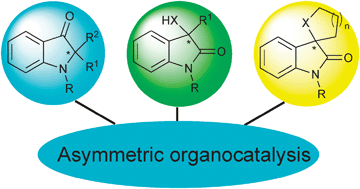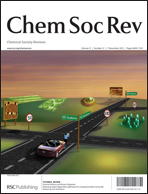In recent years, organocatalysis has enhanced its importance as a tool for the synthesis of enantiomerically enriched compounds. Among the candidates for organocatalysis, the construction of asymmetric quaternary carbons is regarded as a challenging problem in organic synthesis. In particular, 3,3′-disubstituted oxindoles have one or more asymmetric quaternary carbon atoms and they represent a large family of bioactive compounds and synthetic derivatives that mimicry natural products. Therefore they are good targets for drug candidates and in the last two years many papers have appeared on organocatalytic methods for the synthesis of 3,3′-disubstituted oxindoles. Moreover, in the last few years 2-substituted and 2,2′-disubtituted 3-indolinones have also attracted the interest of chemists. This review aims to cover the literature on these topics from its origin to the end of 2011.
You have access to this article
 Please wait while we load your content...
Something went wrong. Try again?
Please wait while we load your content...
Something went wrong. Try again?


 Please wait while we load your content...
Please wait while we load your content...